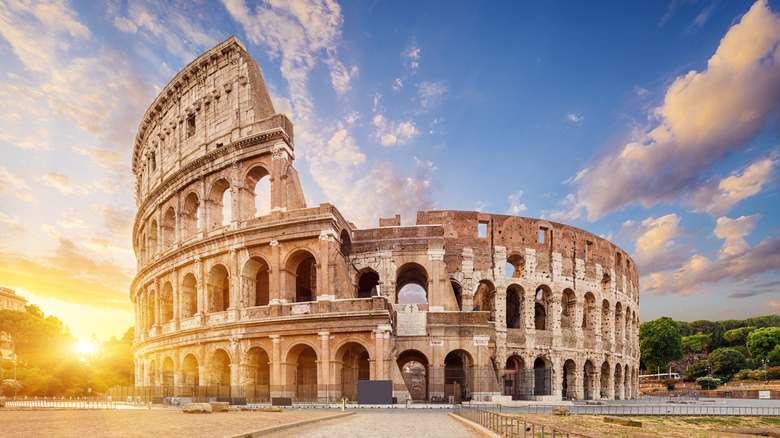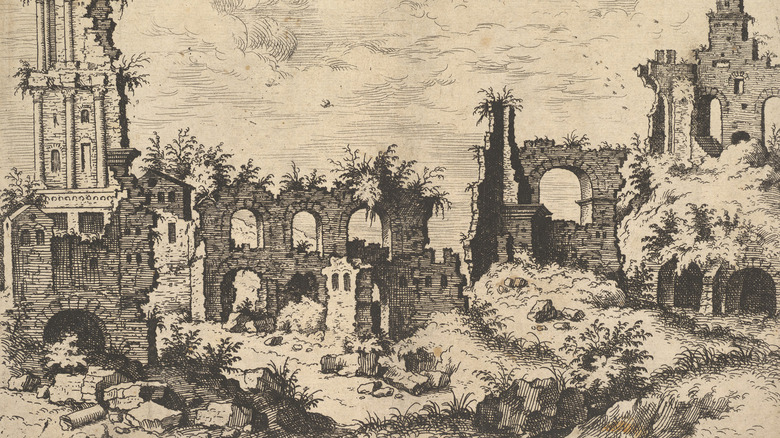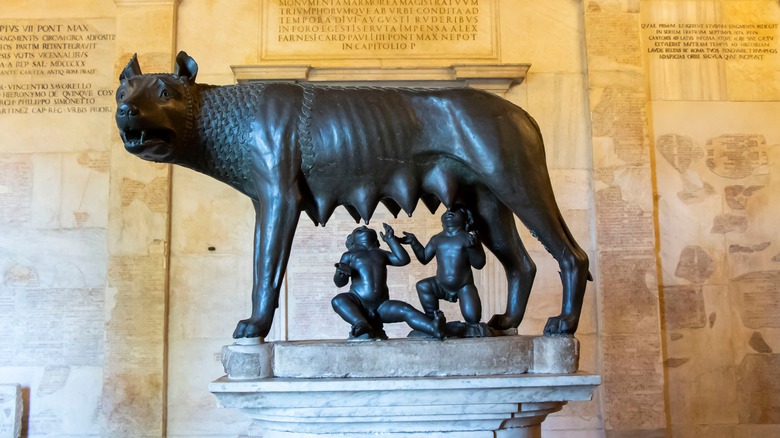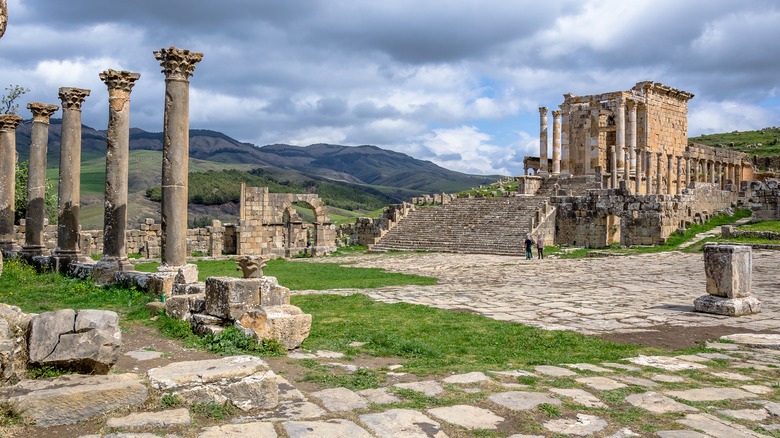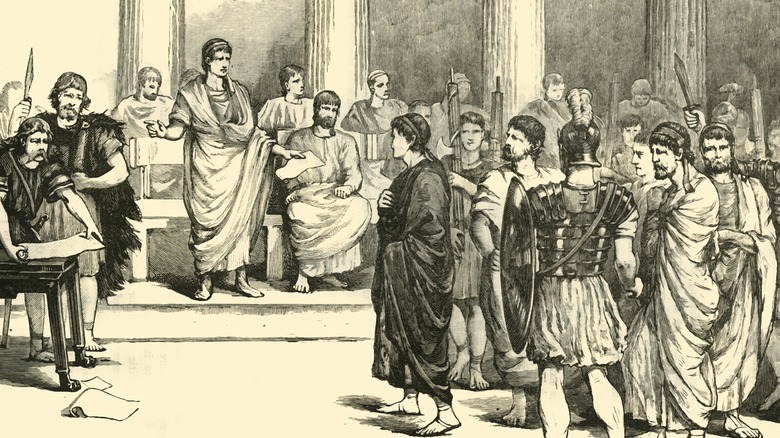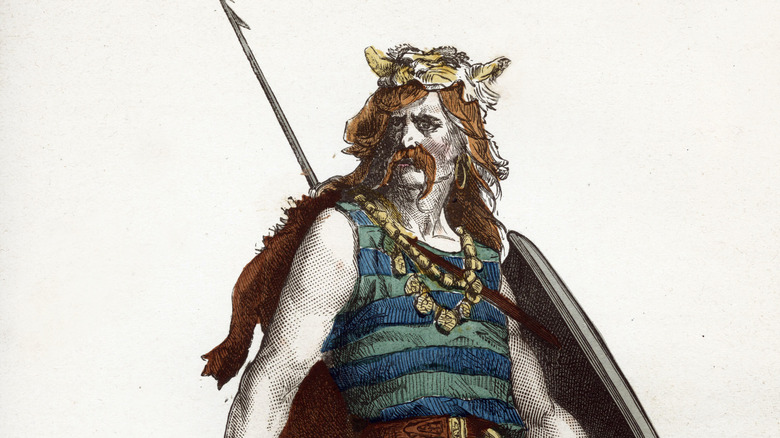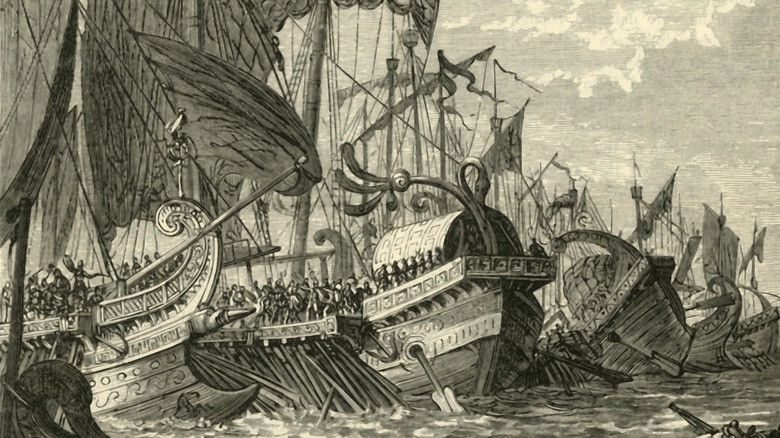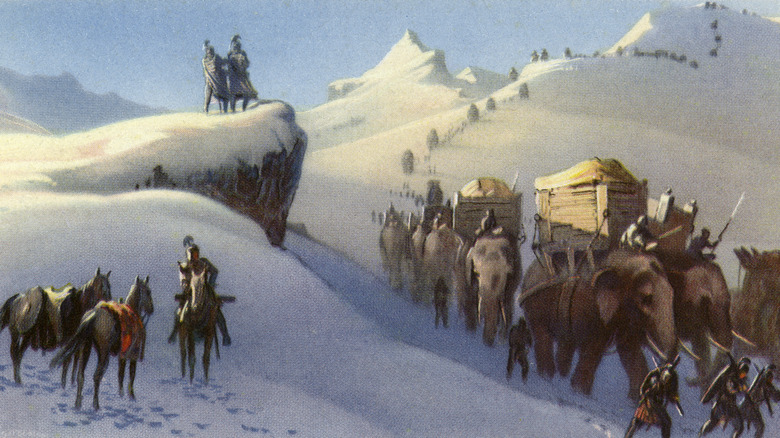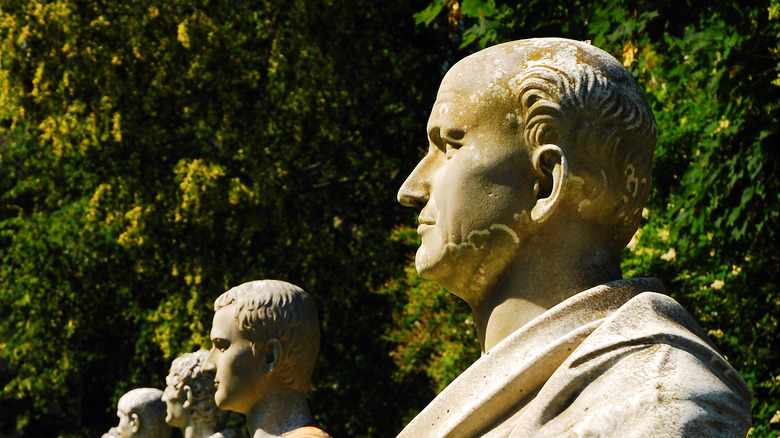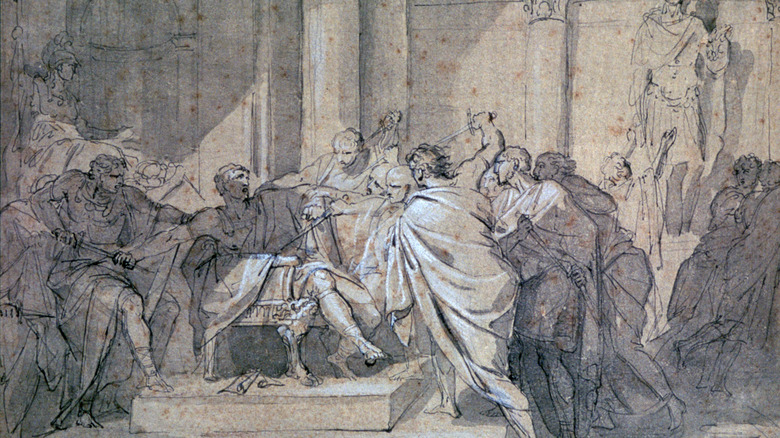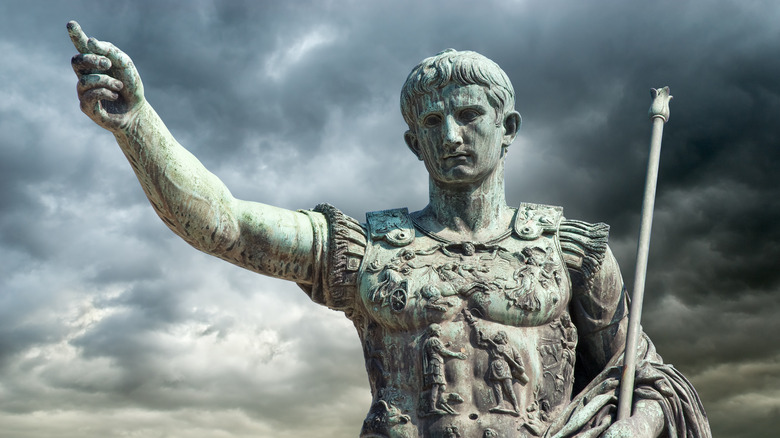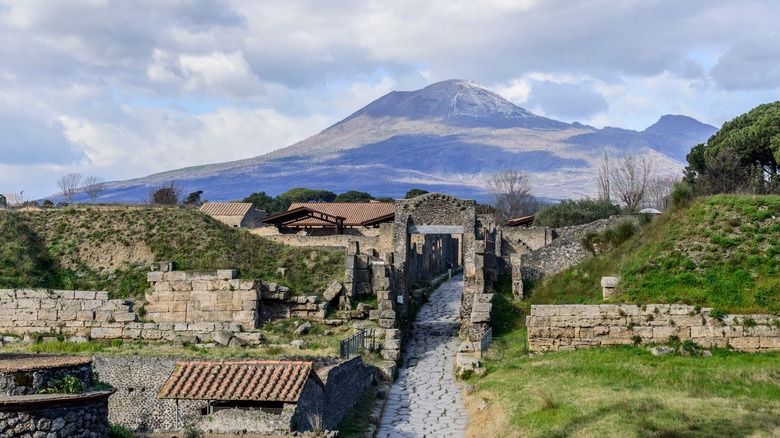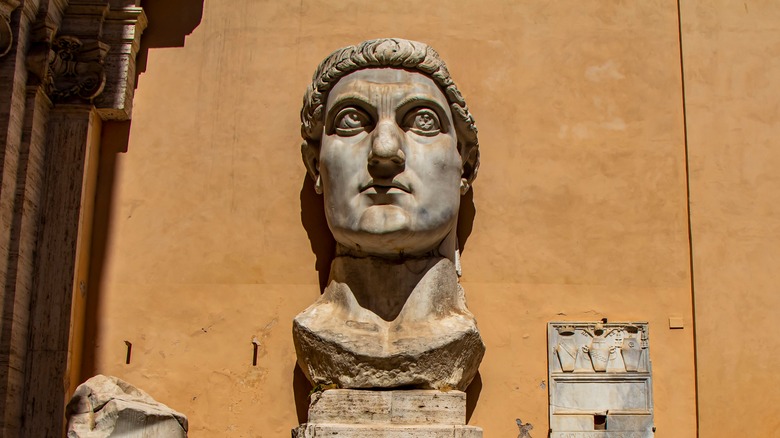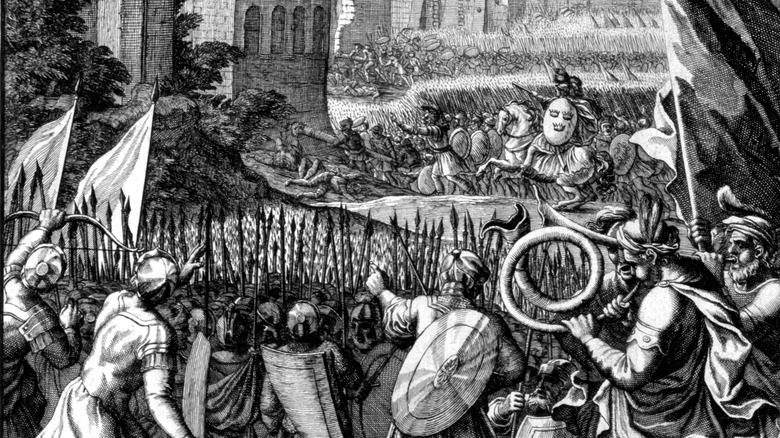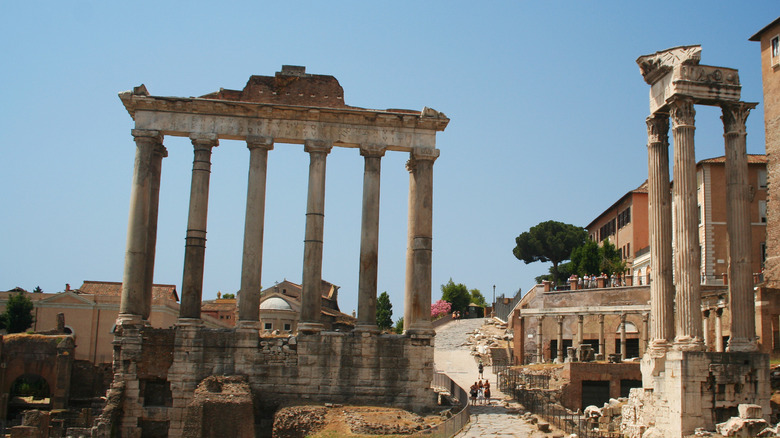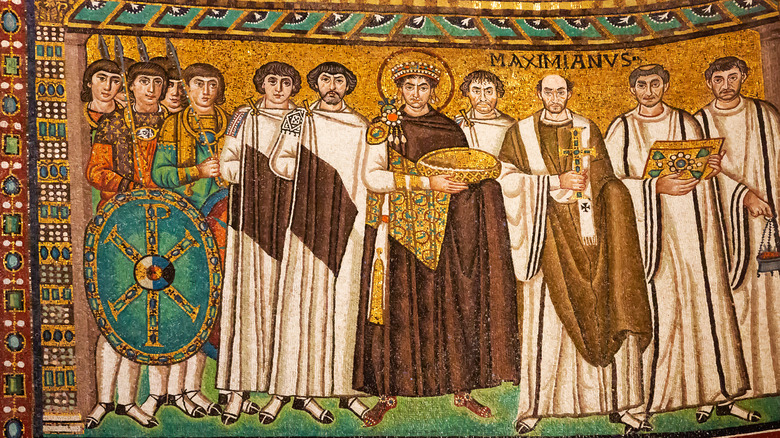Roman Empire Timeline Explained
From a certain point of view, it can be said that the Roman Empire lasted for an astonishing 2,206 years, spanning much of three millennia and reaching from an era whose historical "facts" are all but lost, to a time when the great artists of the Renaissance were creating works still readily available to view today. Thus, the timeline of Roman history is about as convoluted as it is long, and one could also easily argue against that duration of the Roman civilization.
For a more digestible approach, here's a look at the history of Rome as it is usually divided up by scholars of antiquity, which splits the timeline into four major periods: the Period of Kings, the time of the Roman Republic, the time of the Roman Empire (indeed, calling the Roman civilization the Roman Empire for the whole of its timespan is so common as be accepted, but it's not technically accurate), and then a brief look at the centuries that followed the commonly accepted date of the Fall of Rome in the year 476 A.D., after which only the Eastern Roman Empire, also called the Byzantine Empire, persisted.
The earliest "history" of Rome, the aforementioned Period of Kings, is a mix of truth and legend, and it was thus even for the Ancient Romans. But to most accurately place these ancients in chronological context, we need to start our look at the timeline of Ancient Rome even a few centuries earlier.
1000 B.C. – The Palatine Hill: Rome's first settlement
While the more formal founding of Rome would not occur until some time in the eighth century B.C., archaeologists have confirmed that continual habitation of the Palatine Hill, one of seven hills that form the bulk of the ancient city of Rome (not to mention the current Italian capital), started closer to the year 1000 B.C., according to data sourced from The Latin Library. Which means that the so-called Eternal City has actually only been a site of unbroken human habitation for about 3,020 years, but that's still quite a fine run.
According to legend, the Palatine Hill would be the site where Romulus founded the city of Rome after slaying his brother, Remus. According to another legend, it was where the Trojan hero Aeneas settled after leaving Troy when that fabled city fell to Greek troops, and in so settling there, he founded Rome (via World History Encyclopedia). In truth, the Palatine Hill was settled by groups of farmers and shepherds looking for a more defensible place to raise their crops and livestock, yet a place that left them near enough for trade with the prosperous Etruscans to the north. These settlers were the Latins, named for the plain from which they had migrated, Latium, and they were the forebears of Roman civilization.
753 B.C. — The legendary founding of Rome
The Ancient Romans held that 753 B.C. was the year their civilization was founded, and in fact they even had it pinpointed to a specific day, which, per World History Encyclopedia, correlates to our modern calendar's date of April 21 of that year. As noted, the Romans believed (or at least kept on sharing the story) that Rome was founded by Romulus — who they believed was a demigod, in fact — who chose to settle on the site of the future great city after killing his brother, fellow demigod Remus, after the brothers fought over where to build their new city.
To add to the richness of the lore, it should be noted that many Romans also believed that these quarrelsome brothers were the ancestors of the aforementioned Trojan hero Aeneas, and that Rome was named for a woman named Roma with whom Aeneas and his fellow Trojan exiles travelled. The historicity of all of these accounts is easily doubted by the modern scholar, but for Romans, 753 B.C. was seen much as the year 1776 is for Americans — before that year, there was no true Rome in the minds of the ancients. As it happens, though, Rome's actual founding can traced to an approximate year more than 125 years later than that.
625 B.C. – The actual founding of Ancient Rome
Sometime between the years 625 B.C. and 600 B.C., the actual founding of Ancient Rome took place. It was around these years that several groups of Latium villagers came together to form a larger, more defensible, and permanent settlement. People had lived on the Palatine Hill for some four centuries already, but now a truly permanent town took shape, one that archeologists can confirm was definitely established by around 600 B.C., per data from the Milwaukee Public Museum.
What is not clear is if this better-established city rose to ward off Etruscan aggression or in the wake of an Etruscan victory over the Latiums. The history of these two groups of people would be closely intertwined for hundreds of years (via World History Encyclopedia), dating back to before the establishment of Rome until Etruscan power began to wane following the ascendence of the Roman Republic (via World History Encyclopedia). Thus, it's quite possible that a group of Etruscans took over a Latium settlement, built it up, and in so doing sewed the seeds of their own fate (via Smithsonian Magazine). Because what is known for certain is that throughout the remaining centuries that led up to the Common Era (the time when years switch to C.E., also known as A.D.), Rome steadily wiped the Etruscan civilization off the map.
625 to 509 B.C. — The Period of Kings
This earliest period of what can be thought of as true Roman history was the Regal Period, aka the Period of Kings (via Milwaukee Public Museum). It started off in mythology and ended in verifiable history, per ThoughtCo. The Romans held that their first king was none other than Romulus, now known as legend. He is thought to have ruled from 753 to 715 B.C. Next came the kings Numa Pompilius and Tullus Hostilius, who ruled from 715 to 673 B.C. and from 673 to 642 B.C., respectively. Then came the Roman king Ancus Martius, who ruled from 642 to 616 B.C.
The next king was of Etruscan descent, per Britannica, and was a man named Tarquinius Priscus (aka Tarquin the Elder) who ruled from 616 to 579 B.C. He was followed by Servius Tullius, who was king from 579 to 535 B.C. and did much to bring structure and organization to the Roman military and society in general. He would be the last of the line of decent and noble kings who served Rome well. He was followed by Tarquinius Superbus, also called Tarquin the Proud, king from 534 to 510 B.C., which you can note as the date of the founding the Roman Republic. After Tarquin's tyrannical rule was cut short, the Roman people were done with kings, and the Period of Kings — seen as lasting from 625 to 510 B.C. because those are the dates of verifiably real rulers — concluded.
509 B.C. — The founding of the Roman Republic
The year 509 B.C. saw the founding of the Roman Republic, per Britannica. The opportunity to do so came thanks to the Etruscans. Historians believe that a group of Etruscans led by Porsenna, an Etruscan king seated at the nearby power center of Clusium, decisively defeated Tarquinius Superbus (Tarquin the Proud) in battle in 509 B.C. and threw him from the throne — he would die in exile some time later in 495 B.C. (via Britannica). Porsenna tried to take over as the new king of Rome, but the people of the city-state — already somewhat organized into a government, as a Senate had already existed that was supposed to advise the king — took power, appointing consuls as rulers who led without absolute power.
In the early days of the Roman Republic, most actual power resided in the hands of men from a few power families, called patricians, but over the ensuing centuries, a new system of government was established. After years of conflict between the Patricians and the so-called Plebs, the large body of Roman citizens who were largely without land and traditional wealth and power, several other bodies were added along with the extant Senate. These were, per World History, the Concilium Plebis (or Council of Plebs), the Comitia Centuriata (made up of soldiers), and the Comita Tributa (or the tribal assemblies). The Council of Plebs and Comita Tributa gained the power to create new laws, and Roman citizens gained a higher degree of self-rule. This form of government would persist, though often in fractious form and with dictators appointed in times of conflict, for nearly 500 years.
450 B.C. — The 12 Tables of Law are inscribed
The 12 Tables of Law, so called because 12 bronze tablets were used in the first inscription of these new statutes, were created in either the year 451 or 450 B.C., per World History. They represent some of the earliest known codified laws and would serve as a basis for law going forward throughout history, even influencing later legal documents. Scholars believe that in the year 451 B.C., the Roman Senate sent a committee — the decemviri, per Britannica — of three men to Athens to study the work of Solon, a celebrated Greek politician who had lived some hundred years before.
With the advice of this exploratory committee, the aforementioned ad hoc decemviri, a group of patricians then created the legibus scribundis, or written laws, that would come to be known as the 12 Tables. These laws limited the power of the wealthy and elite and enshrined equal protections for all citizens (note, many "Romans" were not counted — women were not seen as full citizens and slaves were, of course, powerless, per History Extra) under laws that could, thereafter, not simply be changed at the whim of the legislators.
390 B.C. — Gauls sack the City of Rome
For what would be the last time in approximately 800 years, the year 390 B.C. saw foreign soldiers attack and sack the city of Rome. This taking of the Roman capital followed a Roman defeat at a battle that took place a short distance north of the city, per World History. The conflict followed Roman intervention on behalf of an Etruscan city the year before, in 391 B.C. Though defeated in that battle, where Roman troops helped break the siege of Clusium, an Etruscan city, a regrouped Gallic army under the chieftain Brennus smashed apart a Roman army and then marched on Rome itself, which was largely undefended and without proper defensive walls at the time.
Two days after the battle, the Gauls easily invaded and looted Rome, then burned much of it and invested other parts, killing scores of Roman citizens as they did so. A number of Romans held out on the fortified Capitoline Hill and a months-long siege commenced, eventually leaving both the encircled Romans and besieging Gauls starving, sickened, and weak. The Romans sued for peace and agreed to hand over 1,000 pounds of gold, but during a squabble over the weighing of the ransom, a Roman army under the general Camillus arrived and finally the Gauls were run out of Rome, but they left a city in ruins and shaken to its core. As a result, the defenses of Rome were greatly built up and its military tactics and armament improved.
264 B.C. to 241 B.C. — The First Punic War
Prior to the Punic Wars, Rome was the major power on the Italian Peninsula; following these conflicts, Rome was dominant across the Mediterranean. But per Dickinson College's Commentaries, in the 280s B.C., a group of Italian mercenaries (effectively pirates) called the Mamertines invested the town of Messana on northern Sicily. In 265 B.C., the people of the Sicilian Greek city-state Syracuse, on southeastern Sicily, attempted to oust the Mamertines, who appealed to the Carthaginians for help. Carthage was a major naval power, and their forces quickly drove the troops from Syracuse back out of Messana.
Worried by ongoing Carthaginian occupation, the Mamertines appealed to Rome for help, and Rome, uncomfortable with a major regional power so nearby, agreed. The ensuing war began with myriad battles fought all around the island of Sicily, but by 256 B.C., Rome had built up a major navy and brought the war to North Africa, the Carthaginian homeland. After initial successes there, the regrouped Carthaginians dealt the Romans many smashing defeats which, along with ravaging storms that ruined fleets, saw Rome on the defensive, often losing smaller guerilla-style battles orchestrated by the Carthaginian general Hamilcar Barca, the father of Hannibal. The tide finally turned again in the late 240s B.C. when the Roman Senate pushed for a major renewed offensive. After 23 years of war, Carthage capitulated and evacuated Sicily, Rome's overwhelming manpower and resources having led to victory. (And FYI the wars are called "Punic" because of the people of Carthage were descended from Phoenicians, per The Metropolitan Museum, and "Punic" was the Latinized term for that group, per ThoughtCo.)
218 to 201 B.C. — The Second Punic War
The Second Punic War started with the occupation of a city only marginally under the auspices of Rome. In this case, the city was Saguntum, an independent city allied with Rome yet surrounded by Carthaginian lands. In 219 B.C., when Carthage's leader Hannibal overtook Saguntum, its people appealed to Rome for help. Negotiations for a peaceful settlement failed, war loomed again, and Hannibal took the fight right to Rome. Knowing Rome's navy now outmatched his and hoping to draw off a near-certain attack on the Carthaginian homeland in Africa, Hannibal led his armies over the Alps to attack Rome from the north. These armies included, per the Dickinson College Commentaries, 38,000 foot soldiers, 8,000 mounted troops, and 37 war elephants.
Though some 30% of his troops and almost all of his elephants died in the crossing of the mountains, when Hannibal arrived in Northern Italy, his forces were able to wage successful battles against the Romans over the next few years. Hundreds of towns fell to the Carthaginians. But after being slowly worn down by warring in a foreign land, when Hannibal at last reached the outskirts of Rome, his armies were too depleted to properly besiege the city, and the tides of war turned.
Over the remaining years of the war, Rome regained all of the Italian territory it had lost and then began to capture land in Hispania and North Africa, largely thanks to the leadership of the Roman general Scipio Africanus. By 201 B.C., Carthage sued for peace, surrendered all of its lands outside of Africa, and Rome was left as the unchallenged ruler of the Mediterranean region.
60 B.C. — The First Triumvirate is formed
In the decades that followed the Punic Wars, Rome consolidated its power, defeating barbarian tribes to the north and holding sway across the Mediterranean Sea. Much of the strife the Roman Republic faced in those years was internal, including a major slave revolt led by an escaped gladiator named Spartacus in 73 B.C., per World History, uprisings among the restive populace, not to mention the threat of civil war waged by several powerful generals. At that time, armies tended to be loyal primarily to their leaders, not the state, and thus in 60 B.C., three generals, Gaius Julius Caesar, Marcus Lucinius Crassus, and Gnaius Pompeius Mahnus (aka Pompey the Great) banded together in an alliance that would come to be known as the First Triumvirate.
Seizing control of the state, ostensibly for the good of Rome (but in fact because each man wanted power yet would have been thwarted had he gone at it alone), the members of the First Triumvirate shared an uneasy alliance for seven years, until Crassus was killed following a defeat in battle against the Parthians to the east, having sought out military leadership and hoping to burnish his fame. (Crassus was fabulously rich but not as militarily accomplished as the other men.) With Crassus dead, the rivalry that had long simmered between Pompey and Caesar flared, and the alliance fell apart. The two would meet in battle in Greece in 48 B.C. Caesar was the winner and Pompey fled to Egypt where he was promptly murdered, leaving Julius Caesar to take on the title of dictator and become, effectively, the first emperor of Rome.
March 15, 44 B.C. -- The assassination of Julius Caesar
Following the defeat and death of Pompey the Great, Julius Caesar took power as the unchallenged ruler of Rome, serving in a role not seen in that civilization since the end of the Period of Kings. Unlike previous dictators, who held unchecked rule for only the duration of a major threat to Rome, Caesar's power was slated to be complete; in early 44 B.C., he was declared Dictator for Life. Per History, he began ignoring the Senate and passing laws, he had coins minted with his image upon them, and he accepted or rejected the results of elections of members to lower Roman offices at will, thereby negating the legitimacy of elections. But what most concerned the suddenly weakened members of the formerly ruling parties was the fact that, despite his autocratic ways, Caesar was gaining popularity with the people, largely by promising land and money to retiring soldiers — often from his own coffers.
Determined to stop the dictator once and for all, a group of senators calling themselves "Liberators" conspired to assassinate Caesar. The murder was carried out in the chambers of the Senate on March 15 — the Ides of March — of 44 B.C. A group of Senators stabbed him 23 times, in so doing hoping to revive the Roman Republic. The result was the opposite: outraged at the killing of a popular ruler, many Romans rose up in revolt, civil war broke out between Mark Antony, Caesar's one-time deputy, and Octavian, Caesar's great-nephew, adopted son, and prescribed heir. Ironically, the fate of the Republic was sealed.
27 B.C. — The Roman Empire begins as Octavian emerges as Caesar Augustus
16 years after Julius Caesar was murdered in hopes of protecting the republic, Rome's first true emperor took power. This was Caesar's heir, Octavian, who would come to be known as Caesar Augustus when he took over then realm in 27 B.C. This appointment came from the Senate, but thereafter Augustus and all subsequent Roman emperors would be the undeniable — if sometimes disputed — heads of the Roman state.
Caesar Augustus would command Rome until the time of his death in the year 14 A.D. During his reign, which commenced with him securing the allegiance of many of his great uncle Julius Ceasar's former troops and other allies, per Britannica, the tumult that had riven Roman society for decades was calmed, peace was restored, and Rome was again seen as a powerful and influential civilization, both by its citizens, its allies, and its rivals. He proved himself an adroit military commander overseas, a skilled politician in Rome, and, shortly before his death, he even took on the title pontifex maximus, meaning he was the head of the Roman religion as well (a term that lives on in the Roman Catholic church).
August 24, 79 A.D. — Mount Vesuvius erupts
On August 24, 79 A.D., Mount Vesuvius erupted for the first time in hundreds of years, per History. The eruption would destroy the 20,000-person city of Pompeii and the 5,000-person town of Herculaneum, both prosperous Roman settlements, and kill many thousands of people, who were then buried in volcanic ash and rock for some 1,700 years until their rediscovery by archeologists. On its own, the eruption of Mount Vesuvius was a tragedy that was well-noted across much of Ancient Rome and was written about by the famed orator and historian Pliny the Younger, an eyewitness to the event. But what was a tragic fate for the ancients was a source of great learning for modern scholars.
Because Pompeii and Herculaneum were so well preserved under many feet of rock and ash — up to 17 feet in some places — their excavations in modern times have been a treasure trove of artifacts and information from and about Rome in its days of Empire.
312 A.D. — Constantine is victorious at the Battle of Milvian Bridge
The Battle of Milvian Bridge would have been somewhat significant in Roman history on its own, as it saw the emperor Constantine assert his total rule over the Western Roman Empire (Emperor Diocletian had split the empire into two halves in 286 A.D., with the new Eastern Empire ruled from Byzantium, per World History) after he defeated his rival, Maxentius, and ended a civil war. But what made the battle truly significant for Rome and for all of human history thereafter is the fact that, per Britannica, Constantine had converted to Christianity shortly before the fight, having famously said to have seen a cross in the sky.
In victory, Constantine would soon lift the ban on Christianity, still a minor and largely outlawed (and even persecuted) religion in Roman empire, soon making it the primary religion of the land. He would also move his seat of power from Rome to Byzantium (soon called called Constantinople, and now called Istanbul), reunifying Rome as he was ruler of East and West. But in 330, Constantine again officially divided the empire into East and West and, in so doing, weakened Western Rome badly, per U.S. History.
410 A.D. — Visigoths sack Rome
On August 27, 410 A.D., the city of Rome was sacked by foreign invaders for the first time in some 800 years (via World History). Not since the Gauls had entered the city in 390 B.C. had Rome been invaded, and this three-day rampage through the city marked the beginning of the end for the Roman Empire. Ironically, per National Geographic, the Visigoths who sieged and took the city that August had more in common with the Romans than they had differences. Like the Romans of the day, they were Christians, and their leader, Alaric, had even sought to ally with Rome in the past, though his appeals were rejected.
During the sacking of Rome, the Visigoths laid waste to much of the city but dutifully protected many Christian relics and treasures that were housed in churches in the city. At the time of the attack, Rome was not even the official Roman capital; the seat of power having been moved to Ravenna two hundred miles to the north.
476 A.D. — The fall of the Roman Empire
476 is the year generally accepted as the end of the Roman Civilization. Already sacked again in 455 by the Vandals, it was in 476 that a Rome "officially" fell, following the deposition of the last emperor ever, Romulus Augustus, by the Ostrogoth leader Odoacer. Never again would the Western Empire have a true ruler, per History, and certainly never again would it have an emperor or expand and take lands from other peoples. Persisting from about 625 B.C. until 476, from the Period of Kings through the Roman Republic and until the end of the end of Roman Empire, Ancient Rome persisted for approximately 1,100 years.
The Fall of Rome is commonly seen as the end of antiquity and the beginning of the early Medieval period, also known as the Dark Ages (via World History)— an apt title in many ways, for with the fall of the Western Roman Empire, much of the Eurasian lands were beset by frequent wars and were without notable cultural progress for nearly a thousand years (via Britannica). In the east, however, Rome persisted in many ways.
1453 A.D. — The end of the Byzantine Empire
Though the Western Roman Empire fell in 476 A.D. (via History), never to rise again, in the east, the Byzantine Empire, as the Eastern Roman Empire became known, went on strong for nearly another thousand years. During the reign of the emperor Justinian I, which lasted from 527 to 656 A.D., per the National Gallery of Art, the church of Hagia Sophia was built, which remains one of the most impressive and celebrated structures ever built by humankind. Even as various tribes of barbarians staged subsequent invasions of Italy, Islam began to take hold, and as the so-called Holy Roman Empire expanded across much of Central Europe, Byzantium was strong and stable.
But by the 15th century, an ever larger and more powerful Ottoman Sultanate was threatening Byzantium, and finally, following a brutal siege of nearly two months' duration, Constantinople, the capital of the Byzantine Empire, fell to the forces of Sultan Mehmed II on May 29, 1453, per Britannica. For all intents and purposes, it was the final end of Rome.
That said, much of the architecture of Rome lives on in ruins and its influence is felt in buildings and monuments erected in the subsequent centuries. Roman law and its republican approach to government is still very much alive in many nations today. Latin, the language of the Romans, greatly influenced many modern tongues. And of course the Roman spread of Christianity had a permanent effect on history and on the lives of billions of Christians. In some ways of looking at it, therefore, the timeline of Rome persists yet.
